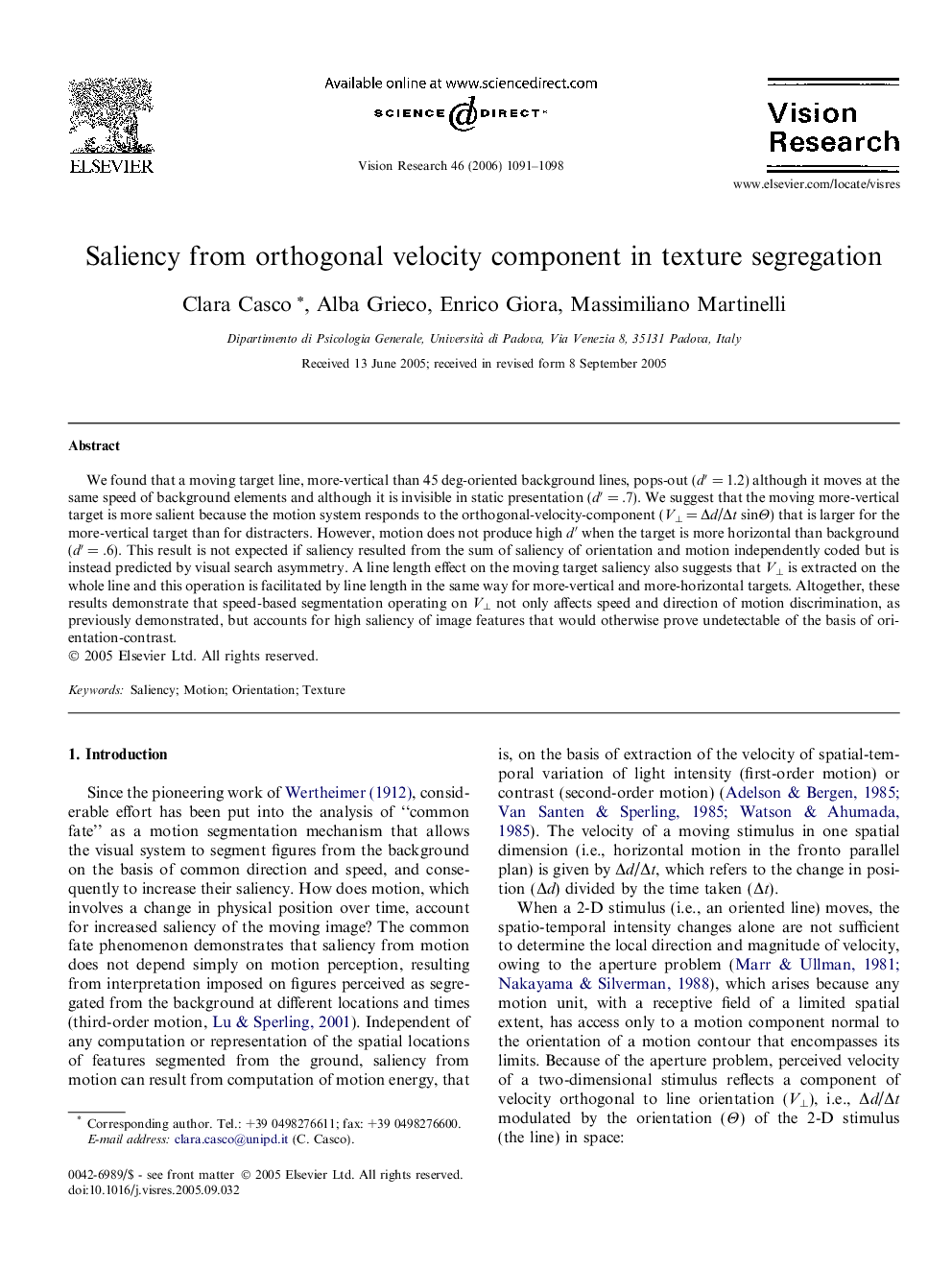| Article ID | Journal | Published Year | Pages | File Type |
|---|---|---|---|---|
| 4036366 | Vision Research | 2006 | 8 Pages |
We found that a moving target line, more-vertical than 45 deg-oriented background lines, pops-out (d′ = 1.2) although it moves at the same speed of background elements and although it is invisible in static presentation (d′ = .7). We suggest that the moving more-vertical target is more salient because the motion system responds to the orthogonal-velocity-component (V⊥ = Δd/Δt sinΘ) that is larger for the more-vertical target than for distracters. However, motion does not produce high d′ when the target is more horizontal than background (d′ = .6). This result is not expected if saliency resulted from the sum of saliency of orientation and motion independently coded but is instead predicted by visual search asymmetry. A line length effect on the moving target saliency also suggests that V⊥ is extracted on the whole line and this operation is facilitated by line length in the same way for more-vertical and more-horizontal targets. Altogether, these results demonstrate that speed-based segmentation operating on V⊥ not only affects speed and direction of motion discrimination, as previously demonstrated, but accounts for high saliency of image features that would otherwise prove undetectable of the basis of orientation-contrast.
